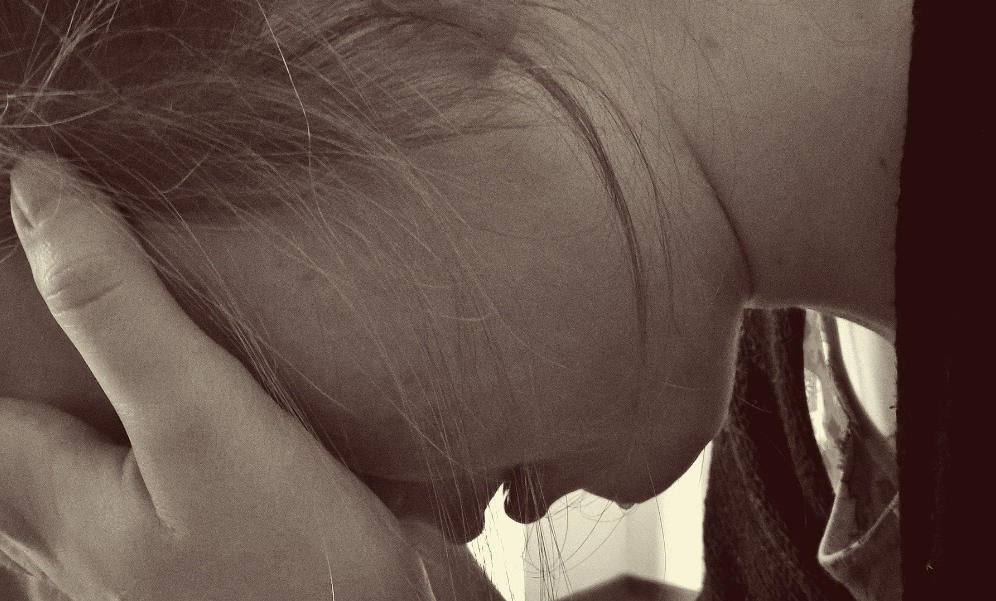The year 2020 has been very different from what we are used to. This year has been globally marked by the Sars-Covid 19 pandemic. Since it became known, this pandemic has infected hundreds of people and many more have died.

In order to somehow control what was happening, so that the infection did not spread further, the WHO (World Health Organization) and governments around the world asked people to keep their distance and stay at home. And, although it seems an acceptable solution in most cases for women who suffer a cause of gender violence, this was a sentence.
Lockdown problems

Let’s be very clear, protection measures against the virus lead to another deadly danger. And, is that we are witnessing how another pandemic in the shadows increases: violence against women.
For this reason, the house where they live is far from being a safe place for women who are victims of gender violence and who, as a result of the pandemic, were confined with their aggressors, increasing the risk of being attacked.
Some of the countries that have reported an increase in reports of domestic violence during the crisis have been: Argentina, Colombia, Canada, France, Germany, Spain, México, the United Kingdom and the United States of America.
As countries report infection and confinement, more and more domestic violence hotlines and shelters around the world are reporting an increase in calls for help.
The lockdown
When we talk about confinement, the first thing we must bear in mind is that the circumstances of confinement enhance the risk factors for individual and social gender violence, since by increasing isolation and barriers that make it difficult to request help and report it.
This situation has as a direct consequence an increase in this violence. However, it must be taken into account that during a period of confinement, complaints decrease since people do not have the possibility of accessing people or institutions that can help them.

Being isolated and in confinement makes women who have violent partners feel more trapped than ever, separating them from the people and resources that can best help them. So this is the perfect situation to exercise controlling and violent behavior at home.
It must be said, health systems are pushing themselves to the limit and domestic violence shelters are also reaching their maximum capacity, exacerbating the service deficit by retrofitting these centers to provide an additional response to COVID.
Gender Violence in detail
When analyzing gender-based violence, the following must be made clear. The first is that it is a historical problem. The second is that these are behaviours typical of certain contexts.
“we know that the lockdown is essential to manage the Covid 19 pandemic but they can keep a woman trapped with their aggressor…” – UN General Secretary, Mr. António Gutierres. –
One of the key elements to understand the different perception of health problems is in the construction of risk.
The main factor that makes a problem perceived as a threat arises from the combination of its magnitude with the time of evolution in a given geographical context, references used when talking about epidemic or pandemic.

Gender-based violence is presented as interpersonal violence, characterized by physical, psychological or even death.
Gender violence has three basic elements: structural component, control objective and the isolation that it entails.
Sadly, in many countries the law is not on womens side. One in four countries does not have laws that specifically protect women against domestic violence.
When speaking with Jasmine Ramires, who works with women in crisis in México, we realize that the idea of the aggressors is that their victims are as isolated from their friends and family as possible since this is the way to guarantee impunity for violence they exercise and increase their control.
Laura Viera: Could you explain to me a bit about gender violence?
Jasmine Ramires: Gender violence is a violence that is continuous in which physical, mental and sexual assaults occur. For this reason, the impact it has on health exceeds the effect that the sum of isolated attacks could have.
Laura Viera: What do you think an aggressor wants to achieve?
Jasmine Ramires: The main objective of gender violence is not harm, but rather the control and subdue women to the mandates and ideas imposed by the aggressor. Likewise, within the control strategy, the aggressor plays with the structural elements at the social level and with individual control to isolate the woman from her entire core of support.
“It is necessary to declare that shelters are essential services and it is necessary to develop safe mechanisms so that women can seek help without alerting their perpetrators”
– Secretario General de las Naciones Unidas, el sr. António Gutierres. –
Laura Viera: What should a woman do if she suffers violence during the pandemic?
Jasmine Ramires: It’s very difficult. How do you tell them, to stay calm and also try not to upset their aggressor. It seems that we have returned to that moment of telling women: do not provoke your attacker. The truth is that they do not have the facility to go out and ask for help because everything is closed due to the pandemic.
Laura Viera: What happens during confinement?
Jasmine Ramires: What happens is a nightmare. They are women who are locked up with their attacker. They cannot go out to ask for help because everything is closed. You don’t have a chance to call because he’s watching you.
Consequences of confinement
Confining battered women in the place where they suffer violence and next to the person who exercises it has as a direct consequence an increase in violence and impunity of the aggressor.
The isolated situation in which thousands of women find themselves is unfortunately very convenient for their aggressors. The fact of not being able to leave home has also made many of these women more difficult to access protection resources.

On the other hand, it is estimated that the economic crisis that has been generated by the pandemic also affects the most vulnerable women since in many cases, they depend on their partners.
Situation in Spain, Colombia and Mexico

The Spanish Ministry of Equality has launched the guide “We are with you. We stop gender violence together” with the aim of publicizing the resources available to citizens. And it is that gender violence, although it affects in the first place the woman who is the victim of this abuse or mistreatment, it also affects the rest of society.
The situation in Colombia also shows the problem. The Colombian Women’s Observatory has reported that between March 2nd and April 23rd, 2020, a total of 3,851 calls were received to line 155 (same period in 2019, 1504 calls were received).
Going into detail, 71% of the calls are concentrated in the departments of Bogotá, Valle Del Cauca, Antioquia, Cundinamarca and Santander; and revealing an increase of more than 300% in La Guajira, Casanare, Chocó, Cesar and Sucre.
One of the crimes with the highest impact is femicide. The organization No es hora de callar has documented 138 cases of murdered women and girls. Most occurred during the period of national isolation.
On the other hand, in Mexico the situation is also complicated, to say the least. The isolation began between February and March 2020, a period in which the attacks increased. According to the Federal Ministry of Health, care in hospitals for domestic violence has been increasing in several states of the Mexican Republic.
According to the National Network of Refuges, 4 out of 10 women contacted them because they were suffering physical violence and 51% of the daughters and sons were victims of attacks while they stayed at home protecting themselves from the pandemic.
In the Aztec country, every hour two help requests are recieved. This shows an increase of 61% compared to June. Of course, it must be said that since a gradual return to the new version of normality began, women have had the possibility of having time alone and in this way making the necessary calls.
During the first 5 months of confinement due to COVID-19, care in shelters, external attention centers, emergency and transition homes of the National Network of Shelters increased 68%. Furthermore, 28 rescues were carried out nationwide, preventing femicides.
Creating safe spaces
Something to keep in mind is that the violence that women and their children face during the current Covid-19 crisis has caused many organizations to change the way they communicate and act during the pandemic.

In Peru, the “Violet Masks” campaign has been launched, an initiative to make visible and support all those women who fight against gender violence in the Latin American country.
And, exactly on this subject we spoke with Diana Rodriguez Franco, who is the current distrital secretary for women in Bogotá, Colombia.
Laura Viera: What are safe spaces and how do they work?
Diana Rodriguez Franco: Safe Spaces are undoubtedly the newest help system. We launched it on April 21st, 2020. What we were looking for was for women to have an option regarding a place to go to if there is violence in the home, something in addition to the help hotlines. We already had the purple hotline and the lawyers and the psychologists from the equality and opportunity houses. So, we needed an option that was not phone or WhatsApp, because they are seized. So, we had to give them an option so that when they went out to buy food at the supermarket or they went to a pharmacy they could ask for help. At that moment they only have to go to talk to the manager of the store and state that they are in danger and need help.
Laura Viera: Why is this initiative a success?
Diana Rodriguez Franco: The success of safe spaces lies in its simplicity. It is not necessary to use secret words, passwords, etc. There is a very clear protocol for store managers, a collaboration with the police so that they provide quick help and the Secretary of Women is on top and monitoring the cases that are reported to the police as the cases that call us directly.
Laura Viera: What is the purple hotline?
Diana Rodriguez Franco: The purple hotline is a free hotline that works 24 hours a day. It can be reached while using a cell phone, whether it is prepaid or not. Thea will always speak with professionals: lawyers, psychologists and nurses. They attend in depth and give psychosocial or legal help.

Rodriguez Franco made it clear to us that during the start of the quarantine, which began in Bogotá on March 20th, calls to the purple hotline increased 230 percent. Mostly due to violence, others related to Covid. After the first month of confinement, the calls dropped but they continue to be more than 100% of the calls they had previously.
Impact of confinement
But, keep in mind that domestic violence, even long before COVID-19 existed, was already one of the most flagrant human rights violations.
Additionally, it must be said that although women suffer from violence, they do not always report it. In fact, less than 40 percent of women who experience violence seek help of any kind or report the crime. Less than 10 percent of these women seeking help turn to the police.
Current circumstances further complicate the ability to report, including limitations for women and girls to access telephones and hotlines, and disruption of public services such as police, justice, and social services.

Confinement, for its part, creates the ideal conditions for the elements of gender violence to be strengthened.
But, this current crisis, that of Sars-Covid 19, is not the first time that women have been in confinement with their attackers. This is a common situation after a catastrophe or disaster.
Aggressors take advantage of circumstances in which mobility is limited to increase violence against women. Examples of moments in which this has occurred can be: the earthquake in Haiti or fires in Australia.
In the research carried out by Debra Parkinson in the context of the fires in Australia, an increase in gender-based violence was demonstrated with 2 key components: increase in violence prior to the disaster and occurrence of gender-based violence in relationships in which it did not exist with anteriority.
Sad conclusions
The COVID-19 crisis has undoubtedly affected women with the greatest impact.

Is gender violence a new disease? No, it is not! It is a disease as old as society is. A disease to which we get used to and even our bodies created antibodies because we naturalized sexist behaviors.
The truth is that years ago sexist violence ceased to be something exclusive to the private sphere to become a social scourge against which we all must fight.
What is certain is that, at this moment, many women and children are experiencing more violence than before. The figures that we see in the media do not reflect what really happens, because now, more than ever, it is difficult to report or ask for help when you have the aggressor locked in the same four walls as the victim. Ultimately, it can be said that confinement traps women in violence and frees the aggressors in its use.
Bibliography
Investigating the increase in domestic violence post disaster: An Australian case study by: Debra Parkinson. published: March 20, 2017.



